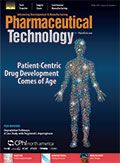Designing for Patient and Public Health
Better drug design and patient education may promote improved personal and public health.
As editor of a publication for bio/pharmaceutical development, I spend a lot of time reading about the latest drug development trends; one emerging theme is patient-centric drug design.
That topic came to mind as I experienced the trials and tribulations of dealing with a recent bout of flu-like symptoms (despite getting a flu shot). For example, attempting to match symptoms to the hundreds of over-the-counter (OTC) medicines in the drug store aisle was a dizzying task, especially while ill. Difficult-to-open packages, blister packs that did not list expiration dates, and confusing dosing instructions contributed to my frustration. And the prescription and OTC medicines I took literally left a bad taste in my mouth.
While my illness was routine and I soon recovered, the implications for patients with serious medical conditions who do not adhere to complex dosing regimens can be health- or life-threatening. Therapies that require multiple oral doses per day, painful injections, administration by trained medical professionals, or have adverse side effects are just a few challenges to effective dosing of drugs. Physical limitations, such as problems swallowing, also complicate delivery of the drug.
In the cover story for this issue, formulation experts discuss the need to bring the patient’s experience to the forefront of drug formulation strategies. Development strategies should include more than just studying the biopharmaceutical and physicochemical characteristics of a drug molecule. Understanding the patient’s physical and dosing needs at early stages of development will be crucial.
I will moderate a panel discussion on patient-centric drug design at CPhI North America in Chicago on April 30, 2019. See the CPhI North America Planning Guide in the accompanying Pharmaceutical Technology's Solid Dosage supplement or visit www.cphinorthamerica.com for more information.
Controlling infectious diseases
While I cannot confirm where I picked up the virus that made me sick, I stayed home for a week to contain the illness. Practical measures such as isolation of an infected person and vaccinations can help contain disease outbreaks.
The Centers for Disease Control (CDC) (1) estimates that 31–36 million people experienced seasonal flu illnesses in the 2018–2019 flu season, prompting an estimated 16.8 million doctor visits, a half million hospitalizations, and up to 46,800 deaths. Based on CDC estimates, the 2018–2019 season was the second most severe in the number of illnesses and doctor visits, fifth in hospitalizations, and fourth in deaths, when compared with other flu seasons dating back to 2010. And, an estimated 169.1 million doses of flu vaccine were distributed in 2018–2019, an increase of almost 9% over the previous season (2).
While measles was declared eliminated from the United States in 2000, reported cases spiked in 2019. Through mid-March, the CDC reported more than 300 confirmed cases of the disease in 15 states, up from 17 cases in 2018. The outbreak was attributed to international travelers bringing the disease to the United States as well as clusters of unvaccinated people in certain communities.
An outbreak in Rockland County, New York prompted county officials to declare a state of emergency that barred anyone under age 18 who was not vaccinated against the measles from public places for 30 days or until they receive a vaccination (3).
Officials told media outlets the measures were taken to get the public’s attention and encourage more vaccinations. Backlash against the emergency order illustrated that opinions about a patient’s (or parent’s) right to refuse treatment are strong and present another medical treatment challenge.
References
1. CDC, Disease Burden of Influenza, accessed March 29, 2019.
2. CDC, Measles Cases and Outbreaks.
3. Rockland County, Press Release, March 26, 2019.
Article Details
Pharmaceutical Technology
Vol. 43, No. 4
April 2019
Page: 10
Citation
When referring to this article, please cite it as R. Peters, “Designing for Patient and Public Health," Pharmaceutical Technology 43 (4) 2019.

Pharmaceutical Tariffs Are Imminent: How Industry is Bracing for Impact
April 16th 2025On April 14, 2025, the Trump Administration launched a national security-driven investigation into pharmaceuticals, a move that will likely result in tariffs being placed on pharmaceutical drugs, ingredients, and other components that are imported from outside of the United States.